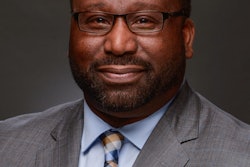CONCORD, N.H.— College freshman Elizabeth Hebert’s choice of a four-year school suddenly got too expensive. George Haseltine already has a business degree, but he concluded after several layoffs that he needed more training to get work.
So, in the middle of this school year, both landed at New Hampshire Technical Institute, which like other community colleges across the country has suddenly grown a lot more crowded.
The two-year schools are reporting unprecedented enrollment increases this semester, driven by students from traditional colleges seeking more bang for their buck and by laid-off older workers.
But community colleges aren’t exactly cheering in this down economy: Tuition doesn’t come close to covering costs, and the state funds used to make up the difference are drying up.
Final figures aren’t in for this semester, but a national group representing community colleges says the average increase from spring-to-spring is dramatic, and similar to what New Hampshire is reporting at its seven schools — a range of 4 percent to 19 percent.
The figure is 20 percent in Maine and South Carolina. One school in Idaho has more than twice the number of students this spring over last.
Last fall, Hebert, of Antrim, began her first semester at Eastern Nazarene College in Massachusetts. But as the economy fell, she began rethinking the thousands of dollars in loans she was carrying — at age 18.
“It was the realization of paying $30,000 a year for four years, and then to take that in loans, it was just way too much,” said Hebert, who is now paying $3,000 a semester at NHTI.
Haseltine, 25, of Rochester, said he was tired of being laid off from various jobs, so he drives almost an hour for his two-year criminal justice program. He hopes to become a police officer.
“The economy being in shambles pretty much; being constantly laid off; and not having lucrative job offers,” he said. “They are three reasons why.”
Nationwide, the average annual cost of community college is $2,402, compared to $6,585 in tuition and fees at in-state public four-year schools, according to the College Board. Average tuition and fees for private four-year schools: $25,143.
Factoring in financial aid, the College Board estimates the average net cost at community colleges is only about $100.
“We have seen it even more and more, mom and dad saying ‘Come back home, we can’t afford it,'” said Jim McCarthy, admissions director at Pennsylvania’s Northampton Community College, where spring enrollment is 10.4 percent higher than a year ago — and for the first time is higher than it was in the fall semester.
New Hampshire is marketing the transfer trend.
“I was going to a much larger school out of state and paying $45,000 a year to go there,” straight-A business major Elizabeth Leone says in a TV ad. “I am getting a better experience here at NHTI and it’s more affordable and closer to home.”
Leone transferred last fall after racking up $20,000 in loans and putting $5,000 more on credit cards for her first year at college in Pennsylvania. She couldn’t imagine how much more she would have had to borrow to return.
Going to a community college doesn’t require giving up on hopes for a bachelor’s, since credits often transfer to four-year schools. States including New Hampshire, Maryland and New Jersey have made it easier for students to begin their higher education at a community college and end it at a university.
Several community colleges can trace a bump in enrollment to area layoffs. In Boise, Idaho, after semiconductor maker Micron Technology laid off 1,500 workers, 243 students enrolled at the Larry Selland College of Applied Technology for this spring, more than double last spring’s enrollment.
Northampton waives a semester’s tuition for people laid off in the last 12 months because of the economy. This semester, 260 students enrolled through the program, more than twice what the school expected.
So why, with enrollment skyrocketing, are many community colleges hurting?
“I get that every place I go,” said John Fitzsimmons, president of Maine’s community college system. “People can’t understand, with more customers, why that isn’t good news.”
Tuition covers just 25 percent of the cost of education in Maine’s system. Other community colleges vary, but all depend on counties or states that in many cases are cutting their funding.
Maine reported spring enrollment increases of 20 percent, after laying off employees and leaving vacant positions open to cope with a $2.9 million state cut. At Wake Technical Community College in North Carolina, the president and two vice presidents are teaching classes because of a $2.3 million cut last fall.
Arizona community colleges have absorbed $19.3 million in cuts and may lose all remaining state aid, said Norma Kent, spokeswoman at the American Association of Community Colleges. Some systems have had to reject thousands of applicants, she said.
“Community colleges are built on access, so for us to turn someone away is like a surgeon saying ‘I won’t operate on someone who is having a heart attack,'” Kent said.
Community colleges hope the impending federal economic stimulus plan will help keep the doors open. Competing House and Senate versions include billions of dollars for Pell Grant financial aid, long-delayed facility improvements and expansions and job retraining programs.
Maine’s Fitzsimmons is all for it, saying “intellectual infrastructure” deserves as much stimulus as roads and bridges.
“Taking people out of the unemployment lines and putting them in school is a great way to take pressure off the economy,” he said, “and when we come out (of the recession) we will have people with higher skills and better opportunities waiting for them.”
© Copyright 2005 by DiverseEducation.com


















